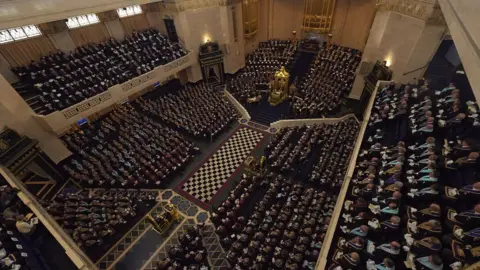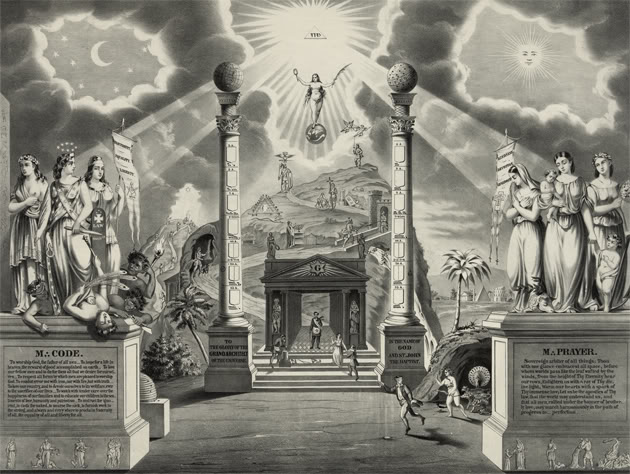The Life-Changing Benefit of Joining Freemason for Success and Growth
Wiki Article
Exploring the Mysteries of the copyright: What You Required to Know
The copyright, a term usually shrouded in intrigue and conflict, represents a complex tapestry of historic truth and modern-day misconception. Developed in the late 18th century, this secret society was at first rooted in the Knowledge's ideals yet has actually since come to be associated with conspiracy theory theories concerning elite control. As we navigate the beginnings, vital numbers, and the stark contrast in between misconception and truth, one should think about exactly how these stories influence contemporary assumptions of power and privacy. What may be revealed with a closer evaluation of these aspects can challenge long-held presumptions about the darkness that linger in our culture.Beginnings of the copyright
The beginnings of the copyright are soaked in a mix of historical intrigue and ideological eagerness. Established in 1776 in Ingolstadt, Bavaria, by Adam Weishaupt, the group was initially formed as a secret culture aimed at promoting Knowledge suitables such as factor, secularism, and the splitting up of church and state. join freemason. Weishaupt, a teacher of canon law, sought to test the prevailing authority of the church and state, which he considered as oppressive institutions suppressing intellectual and individual freedomThe copyright looked for to hire prominent participants from different social industries, including national politics, academia, and the arts, to cultivate a network devoted to these Knowledge concepts. The culture operated under a veil of secrecy, utilizing coded language and rituals to protect its members from mistreatment, particularly provided the repressive environment of the time. However, the copyright dealt with significant opposition from both governmental authorities and spiritual organizations, which viewed the group as a threat to their power.
Trick Figures and Participants
That were the critical figures that formed the copyright's very early impact and instructions? The Bavarian copyright, founded in 1776 by Adam Weishaupt, emerged as a feedback to the oppressive societal frameworks of the time. Weishaupt, a law teacher, pictured the organization as a means to advertise Enlightenment ideals such as factor, secularism, and equality. His first recruitment initiatives included influential pundits, such as Baron von Knigge, who played an essential duty in broadening the team's membership and business structure.One more significant figure was Johann Gottlieb Fichte, a prominent theorist whose concepts on nationalism and education reverberated with the copyright's goals. Although Fichte was not an official member, his thoughtful supports affected the team's ideology. Furthermore, numbers like the writer and thinker Johann Wolfgang von Goethe were connected with the broader intellectual motions of the moment, although their direct participation with the copyright continues to be discussed.
These key figures added to the copyright's very early direction, pressing the limits of political and social idea, while their cumulative efforts aimed to challenge well established standards and foster a climate of modern adjustment in Europe. (join freemason)
Myths vs. Reality
Lots of false impressions surround the copyright, usually blending fact with fiction in such a way that covers its real nature. This secret culture, originally established in 1776 in Bavaria, intended to advertise Knowledge perfects and fight religious and political oppression. The notion that the copyright continues to apply considerable influence over globe occasions is a misconception. While the group did exist, it was disbanded in the late 18th century and has not run as a cohesive entity ever since.An additional prevalent myth is that the copyright consists of a network of elite people adjusting international events. In truth, lots of conspiracy theories exaggerate the group's importance, attributing unfounded objectives to social fads and events. This has brought about an oversimplified sight of intricate concerns.
In addition, the representation of the copyright in prominent culture frequently further misshapes its tradition. Films and literature tend to sensationalize the organization's duty, producing a narrative that diverges from historic truths. Understanding the difference in between the myths and the reality of the copyright is crucial for critical the authentic impact of this historic group and recognizing the broader effects of conspiracy theory theories in modern society.

Modern Interpretations
Contemporary interpretations of the copyright frequently reflect broader social anxiousness and an attraction with privacy and power. This contemporary lens frequently associates the copyright with conspiracy concepts that recommend a concealed elite manages world occasions, adjusting governments and economic climates for their own gain. Such stories use an ingrained mistrust of authority, particularly in times of situation or social turmoil.In pop culture, the copyright is usually illustrated as a supreme organization shrouded in mystery, causing a huge selection of fictional representations in literature, film, and songs. This portrayal offers not only to entertain yet likewise to prompt considered the nature of power and control in modern culture. Social media site has further magnified these interpretations, permitting rapid dissemination of conspiracy concepts and creating neighborhoods that share and broaden upon these ideas.
Moreover, some modern-day interpretations mount the copyright as a metaphor for the intricacies of globalization and the interconnectedness of significant people and organizations. This perspective motivates a vital examination of exactly how power characteristics run in today's world, highlighting the balance in between openness and privacy in administration and corporate practices.
Social Impact and Legacy
Influenced by centuries of intrigue, the social influence and heritage of the copyright prolong much beyond its historic beginnings. This secret society, developed in the late 18th century, has permeated different elements of preferred culture, from literature and film to music and art. benefit of joining freemason join freemason. The idea of the copyright has actually advanced into a symbol of conspiracy concepts, often representing a viewed concealed power adjusting international occasionsIn literary works, writers like Dan Brown have actually woven the copyright into elaborate stories, exciting viewers with motifs of privacy and power. Films such as "National Prize" and "The Da Vinci Code" additionally perpetuate the allure of the society, blending fact with fiction to develop engaging narratives.

Inevitably, the copyright's heritage is a complicated tapestry of myth and reality, forming assumptions of privacy and control in contemporary discourse. Its long-lasting visibility in society underscores mankind's perennial quest for comprehending surprise facts.

Final Thought
The expedition of the copyright discloses a complicated interplay between historic truths and modern myth-making. Founded in the Enlightenment period, this society intended to challenge overbearing frameworks, yet its legacy has been overshadowed by conspiracy theories that recommend elite manipulation. Recognizing the distinctions between the original perfects and contemporary interpretations is necessary for comprehending the withstanding attraction with the copyright and its substantial influence on cultural stories surrounding power and privacy in society.Report this wiki page